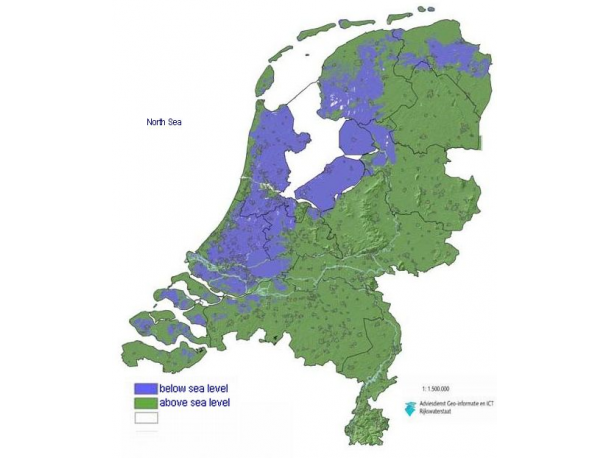Almost everything wrong with biodiversity conservation comes down to the EU Biodiversity Strategy. The EU Biodiversity Strategy is reflected in the UN Convention on Biodiversity (CBD), which is the privatizing of life on the planet and the individual genes inside every living organism. This is the very heart of the reason why biodiversity continues to decline all over the world, an issue closely tied to climate change.
The Rush for Ex-Situ Storage, Classification and Gene-Mining
The EU has invested huge amounts of money and political capital into squirreling away all of the worlds genetic resources into storage in places like the Global Seed Vault at Svalbard. Not only are these seeds no longer available in a practical sense anymore, but this has come at the cost of destroying most other conservation efforts.
With seeds coming out of the seed vault in Svalbard being for sale, this has created a very strong business model for destroying other seed collections around the world. For example taking over the US based Seed Savers Exchange, or the bombing of the Iraq seed bank during the Golf Wars, in an apparent effort to leave Iraqi farmers dependent on other seed sources.
Initiatives like the Open Source Seed Initiative and new rules for organic certification have left the genetic conservation movements in the US and Europe in total disarray. They have imposed genetic tests and written contracts where there were none before, and created distrust between almost all parties.
If you’re going to sell biodiversity, you work with a mentality that says everything has to be identified, documented, traced and owned. If some part of it is to be sold, this has to be quantified, and the buying party needs to be able to negotiate the price and have the opportunity to choose a cheaper alternative. This is completely at odds with how conservation efforts have traditionally taken place.
This mentality creates a ‘rush’ for the magic gene that everyone wants and is willing to pay for, which has nothing to do with conservation of biodiversity. This generates a huge and unmanageable administration, and lack of clarity as to how genetic material can be traded or sold.
This way of thinking is everything the seed saving and biodiversity conservation movements stands against. Traditionally the movement of seeds has followed the movement of people around the globe. People took seeds with them when they traveled, and farmers around the globe traded seeds with one another. The CBD effectively strips the right of people and farmers to spread biodiversity in this way, leaves everyone dependent on official and documented sources of seeds, that can only be moved across borders with permission and for a cost.
Failing Genebank Maintenance and Reproduction
The cost of maintaining a genebank is very high. There are many cases in history where decisions have been made to allow genebank materials to die. This was because it was too costly to maintain, the material did not represent a profitable investment and because the material could still be used for research and a source of genes for genetic engineering. For example the IRRI has allowed many of it’s rice accessions to die. Another example is the small number of bean accessions in genebanks worldwide, because in the 1970s beans were determined to not be profitable enough to maintain so many varieties, so a large number of stored varieties were destroyed to save money.
Even though the seed vault in Svalbard has been presented to the world as a safe place for our world’s biodiversity, there are signs some of the material is dying, and it’s probably a logical conclusion that this was planned from the very beginning.
There are recent reports from users of genebank materials that they are not being reproduced correctly. Very cheap and low quality methods are being used to propagate samples, that are not true reproductions of the original materials. In addition, since the materials are not being maintained in their natural environments, they are not being kept up to date for diseases and changes in climate.
Many of these problems had been avoided in the past with many independent genebanks maintaining duplicated materials. If independent genebanks have different conservation methods, the chances of important materials being lost to a single failure is much less.
Undemocratic Playground for the World’s Wealthy Families
The names of wealthy American families appear all over issues of biodiversity. Rockefeller, Goldman-Sax, Bill and Melinda Gates Foundation, just to name a few. In Europe members of royal families are often involved in biodiversity issues.
Many of these wealthy families and individuals put themselves in the media spotlight, for example with pictures taken with attractive and genetically diverse melons, and other fruits and vegetables. The Bill and Melinda foundation isn’t shy with their gene drive technologies, abusing their relationship with the CBD, and trying to push through approval for environmental deployment of this.
Not just the big names, but the presence of money is undeniable. Well funded university programs, well known and funded charities like Greenpeace and Friends of the Earth are heavily involved. Well funded lobby organizations are active in Brussels and elsewhere. All of these organizations represent their big donors, and are completely unresponsive to civil society. There is virtually no civil society representation when CBD issues are dealt with.
Fake News and Misleading Claims
Almost everything in the current EU biodiversity strategy is based on either fake news or misleading assertions that somehow privatization is going to solve problems that it can’t. For example, even though we live in a world that produces twice as many calories as it needs to feed itself, there’s the suggestion that we need to grow ever more increasing amounts of food, because not only is the world’s population increasing but it’s demanding more meat. More recently, the suggestion that because people are more healthy and sometimes overweight, more calories will be needed to provide healthy diets for them.
There is also the suggestion that somehow creating a seed vault like the one created by the Global Crop Diversity Trust in Svalbard, privately owned, is somehow a benefit to mankind. This is a business venture, designed to make the world dependent on the genes owned by the Crop Diversity Trust, and has nothing to do with biodiversity.
Before this vault was created, the sharing of biodiversity worked on the principle that biodiversity was a commons. The maintenance of collections had to be paid for by the agricultural companies that profited from it and with public funds, but everyone had access to the materials because it was a public commons. This wasn’t a perfect solution, but it was something everyone could agree on and generally worked. It only became a problem when those behind the current EU Biodiversity strategy decided it was a problem, and saw the opportunity for a more profitable arrangement.
There are many more claims like these. There is simply no good science behind any of them. They are simply fake news with a lot of money behind them to promote them.
Patents on Life
The CBD makes patents on life possible. An unintended consequence of this are patents on conventionally bred seeds. According to the supporters of the CBD, patents on conventional seeds are the only problem, but this is not true.
The EU implementation on patents covering life is very undemocratic and causes problems for everything from medicine to agriculture. By design it’s ‘immune to political interference’, with the EU patent office even existing outside the physical control of the EU.
There needs to be an end to all patents on all forms of life, not just for conventionally bred seeds. The issue of patents and the systems behind them need to be addressed in a more democratic way.
Protocols Behind the CBD
Beyond the treaty itself there are also some very important protocols, the Cartagena and Nagoya protocols.
The Cartagena protocol deals with biosafety and for example the release of microorganisms into the environment. This has been in the news recently because the Bill and Melinda Gates foundation is basically using this protocol to justify the public acceptance of it’s gene drive technology. Obviously the world needs something to regulate this sort of thing, but it needs to be done in a more democratic way and not just to push through and justify public acceptance of unwanted technologies.
The Nagoya protocol deals with the transfer and sale of genetic material. This protocol is currently causing a crisis in everything from agricultural biodiversity to natural science museum collections to health care and vaccine research. It creates a system to transfer genetic material that’s so complicated that not even experienced lawyers can sort out the contracts. Violating this protocol is potentially a crime punishable by incarceration, and the solution for these problems as presented by the backers of this protocol is to trick people into signing a contract promising to share the materials with others regardless of the consequences. This protocol is currently the biggest threat to biodiversity.
Biodiversity Movement Restrictions
While most common plant seeds represent very little disease threat, there are restrictions on the movement of all plant material in the process of being imposed internationally. These restrictions require unreasonable administration, and effectively prohibit the international transfer of plant materials for people and small businesses.
These restrictions have the mentality that a disease exists independently, is bad, and must be identified then quarantined or destroyed with chemicals. This mentality is only compatible with conventional industrial agriculture and will wreak havoc with initiatives relating to organic agriculture or biodiversity.
Interestingly, there is one major exception. Travelers can carry anything in hand baggage. This exception makes a mockery of the whole meaning of these restrictions.
These measures effectively prevent gardeners and others working with biodiversity from ordering any materials online or trading over the Internet. This is critical to be able to do in the modern world, and in order to work with biodiversity.
Our House is on Fire!
The EU biodiversity strategy and the Convention on Biological Diversity have nice names, but are directly responsibility for destroying a great deal of the world’s biodiversity. As a matter of urgency, major changes are needed. There are a lot of people currently working hard on these issue with good intentions, but major structural changes and a general change of direction are needed.
It’s time for politicians to take the matter as seriously as climate change. It’s time to stop denying the battle to save biodiversity is being quickly lost, and that a different approach is badly needed.
The EU should abandon the CBD, with the possible exception of provisions prohibiting the release of potentially dangerous organisms into the environment (i.e. Cartagena protocol), but then this has to be made more democratic.
The pretense that in order to save biodiversity you have to privatize and monetize it is seriously flawed, and has caused serious damage to existing conservation networks around the world.
Major investment into biodiversity is needed, but not to squirrel it away into centralized collections with conditions for use that make it inaccessible to most people. Before any investment can make an impact on biodiversity conservation, the basic principles of the CBD must first be abandoned.
Compensation should be made available for those whose work has been disrupted or destroyed by EU Biodiversity policy.




